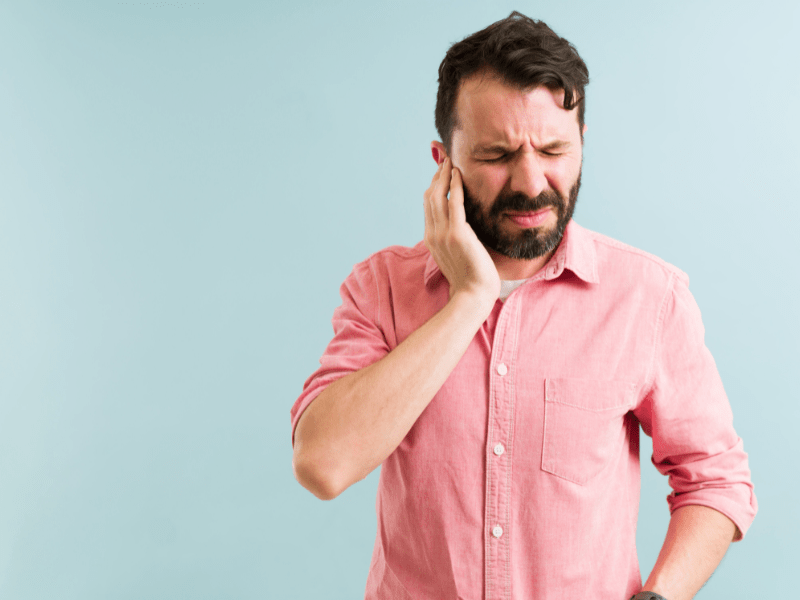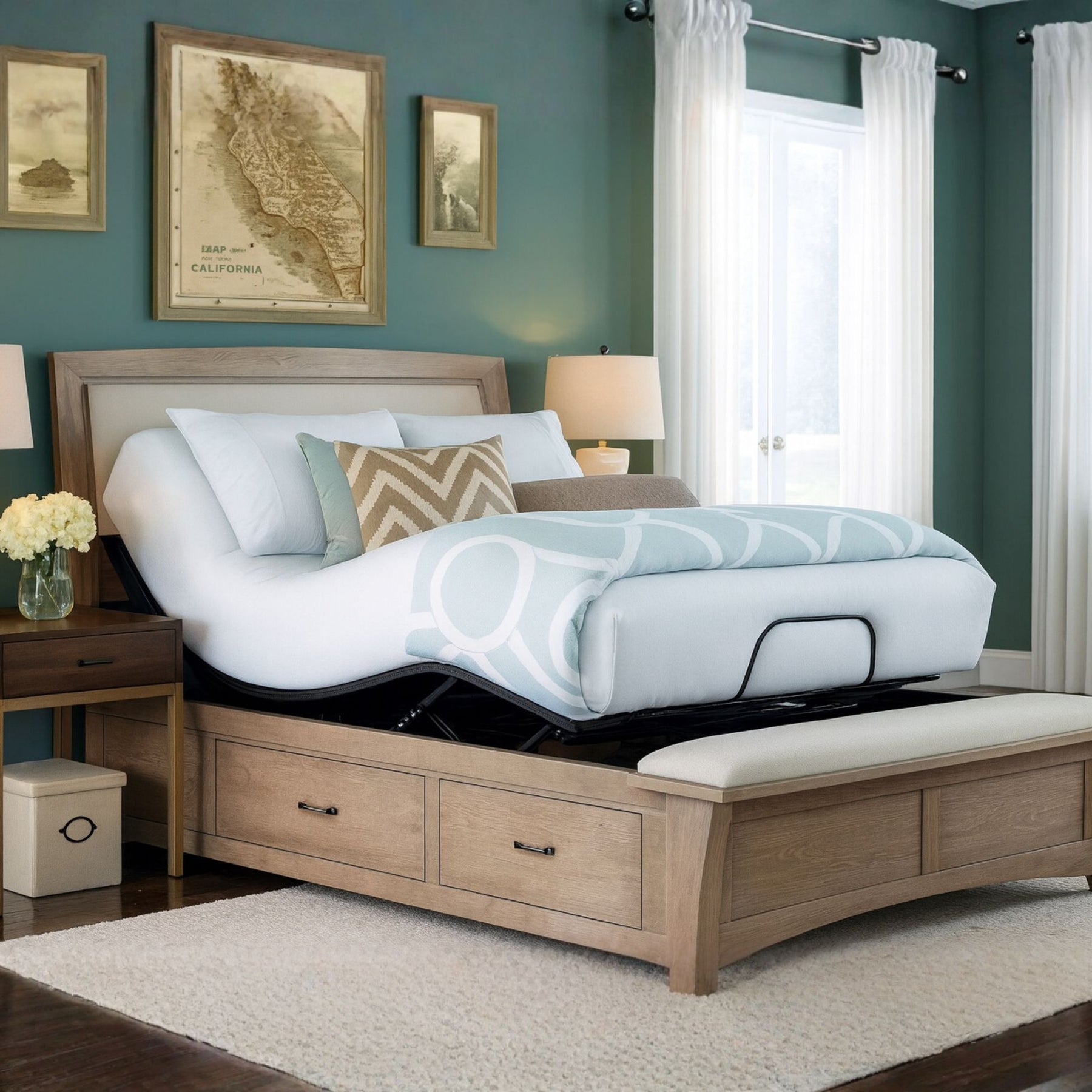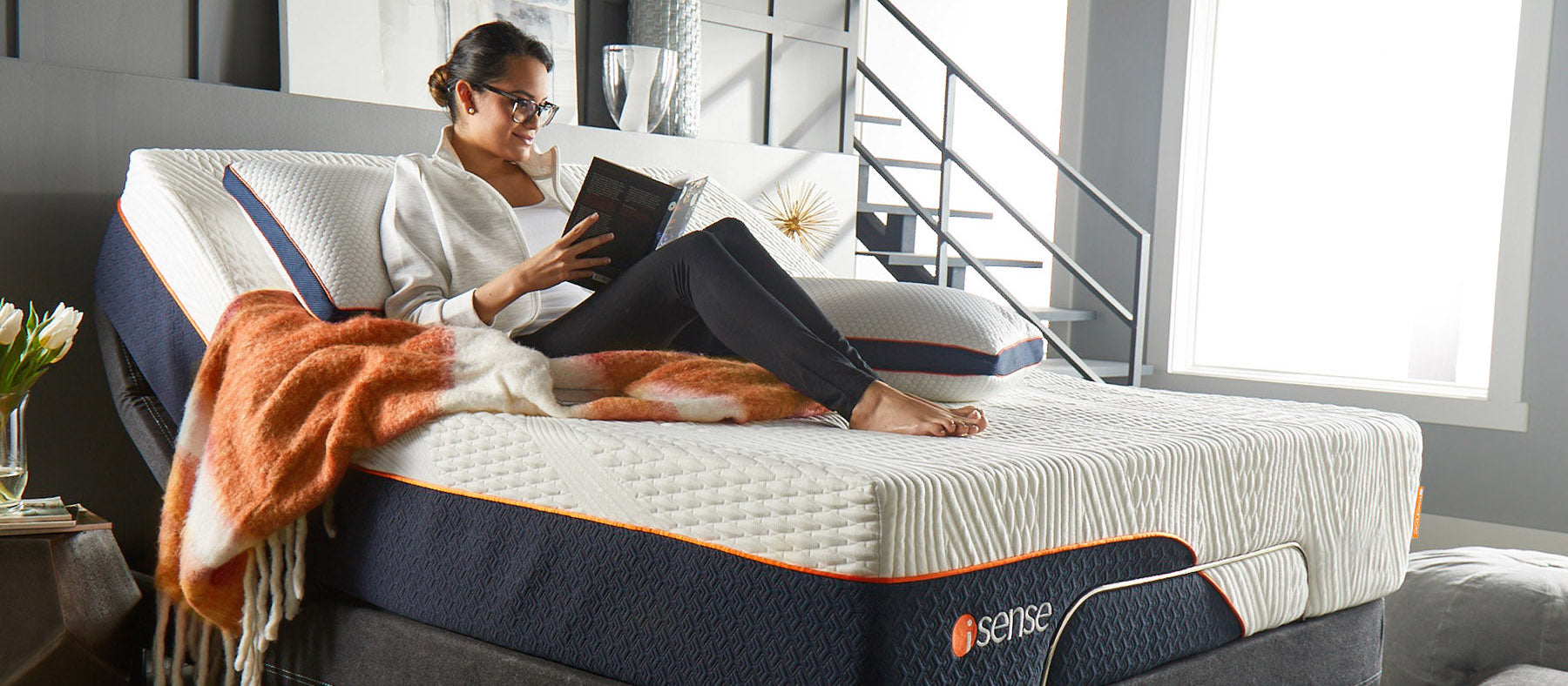Is a fan the secret to better sleep that you've been missing? Many people struggle with maintaining an ideal temperature in their bedrooms, which can disrupt their sleep. This article will explore whether sleeping with a fan turned on helps improve sleep quality and comfort, considering both its benefits and drawbacks.
Are you ready to uncover the mysteries of the humble bedroom fan? Read on!
Benefits of Sleeping With A Bedroom Fan
Sleeping with a bedroom fan helps maintain a comfortable sleep environment by providing a cooling breeze and improving airflow.
Helps maintain a comfortable sleep environment
A fan in your bedroom keeps the air moving. This gives a cool feel. It helps to set up a good room temperature for sleep. If you are too hot at night, it can stop you from sleeping well.
The fan makes sure this does not happen. So, it aids in boosting your sleep quality each night by keeping the room cool and comfortable.
Provides white noise
A bedroom fan gives off white noise. This sound is like a soft hum. It mixes all sound frequencies together. This can help you fall asleep faster. The constant noise from the fan helps block out other sounds. It drowns out any sleep disturbances. If you live in a noisy area or find complete silence too quiet, this will be a big help! The white noise of a fan makes your room calm and cozy for sleep.
Keeps the bedroom fresh
A fan in your sleeping space gives more than a cool breeze. It helps keep the bedroom fresh. The fresh air flow boosts sleep quality and brings comfort for a good night of sleep. Fans work great to prevent you from overheating at night. This keeps sweating away, adds to the cooling effect, and aids temperature regulation. Using fans is a smart way to make sure your room feels nice and cozy for sleep without spending too much money!
Downsides of Sleeping With a Fan On
Sleeping with a fan on can trigger allergies, cause congestion, and result in dry eyes and skin.
Triggers Allergies
Sleeping with a fan on can trigger allergies because it circulates dust, pollen, and other allergens in the air. This can lead to sneezing, watery eyes, and a stuffy or runny nose.
If you already have allergies or asthma, sleeping with a fan may worsen your symptoms. The blowing air from the fan can also dry out your nasal passages and throat, causing discomfort.
To minimize these effects, it's important to keep your bedroom clean by regularly dusting and vacuuming. Using an air purifier or filter can also help remove allergens from the air.
Causes congestion
Sleeping with a fan on can sometimes cause congestion. The air that circulates from the fan can make your mouth, nose, and throat feel dry. This dryness may lead to the overproduction of mucus in your sinuses, which can cause discomfort and congestion. If you're already prone to allergies or respiratory issues, the extra airflow from the fan may irritate your sinuses even more. This could result in sinus inflammation, headaches, and difficulty breathing.
So if congestion is a concern for you, it may be best to avoid sleeping with a fan on or take steps to minimize its effects like using an air filter or placing a water bowl in front of the fan to add moisture back into the room.
Can dry out eyes and skin
Sleeping with a fan on can dry out your eyes and skin. The constant flow of air from the fan can cause moisture loss, leading to dehydration and dryness. This can result in irritated, red eyes and dry, itchy skin. If you already have sensitive or allergy-prone skin, using a fan while sleeping may worsen these conditions. To prevent this, you can try placing a water bowl in front of the fan to add moisture back into the air, or consider using a rotating fan to avoid direct airflow on your face and body.
Ways to Minimize Negative Effects of Sleeping With a Fan On
To minimize the negative effects of sleeping with a fan on, try using a rotating fan, setting a timer, keeping distance between the fan and bed, using air filters, or placing a water bowl in front of the fan. Read more to discover how you can sleep comfortably without any health issues.
Use a rotating fan
Do you sleep with a fan on? It's important to know how to minimize the negative effects of sleeping with a fan on. Here are some ways:
- Use a rotating fan: Instead of pointing the fan directly at you, try setting it to rotate. This will help circulate the air in the room without blowing it directly onto your face or body.
- Set a timer: If you're worried about leaving the fan on all night, set a timer to turn it off after a certain amount of time. This way, you can still enjoy the benefits of the fan without it running for too long.
- Keep distance between fan and bed: Position the fan at a distance from your bed. This will prevent direct airflow that can cause dryness or irritation.
- Use air filters: Consider using an air purifier or placing air filters near your bedroom fan. This can help capture any allergens or dust particles that may be circulating in the air due to the fan.
- Place a water bowl in front of the fan: If you find that the air from the fan is too dry, try placing a bowl filled with water in front of it. As the water evaporates, it can add moisture back into the room.
Set a timer
Setting a timer can prevent the fan from staying on all night.
- Set the timer for 1 to 2 hours after you go to bed. This allows the fan to keep the room cool while you fall asleep.
- A timed fan can provide an initial cooling effect, but it also helps prevent sleep disturbance by gradually turning it off during the night.
- With a timer, you don't have to worry about getting too cold or waking up because of discomfort caused by prolonged exposure to direct airflow.
Keep distance between fan and bed
To minimize the negative effects of sleeping with a fan on, it is important to keep a safe distance between the fan and your bed. Here are some tips to ensure proper distance:
- Place the fan at least 3 feet away from your bed.
- Avoid having the fan directly blowing towards you while you sleep.
- Position the fan in a way that it circulates air around the room instead of directly on you.
- Consider using a stand or table fan rather than a ceiling fan which may be closer to your bed.
Use air filters
Using air filters is a great way to minimize the negative effects of sleeping with a fan on. Here's why:
- Improved indoor air quality: Air filters can capture allergens like dust, pollen, and pet dander, preventing them from circulating in the air while you sleep.
- Reduced allergy symptoms: If you're prone to allergies, using air filters can help alleviate symptoms like sneezing, congestion, and itchy eyes that may be triggered by the fan.
- Better skin hydration: Fans can cause dryness, but air filters help maintain moisture levels in your bedroom. This is especially beneficial for those with sensitive or dry skin.
- Decreased risk of sinus headaches: The fan's blowing air can sometimes lead to sinus headaches due to increased mucus production. Using air filters can reduce this risk and promote better sleep quality.
Place a water bowl in front of the fan
To minimize the negative effects of sleeping with a fan on, you can try placing a water bowl in front of the fan. This simple trick can help add moisture to the air and prevent dehydration. By evaporating water into the room, it can help keep your eyes and nasal passages from drying out. Additionally, it may also help counteract the potential weakening of your nose's defenses against infection caused by circulating air from the fan.
Other Ways to Sleep Cooler
Create a comfortable sleep environment by using light-colored curtains, cool bedding, and taking a shower before bed. Want to learn more tips? Keep reading!
Use light-colored curtains
To keep your bedroom cool and comfortable, consider using light-colored curtains. They can help regulate the temperature during sleep and promote better rest. Light-colored curtains have the following benefits:
- Energy efficiency: Light colors reflect sunlight, reducing heat gains in the room.
- Sunlight control: Light-colored curtains can block out excessive sunlight, keeping your bedroom cooler during hot days.
- Thermal insulation: These curtains provide insulation by preventing heat transfer through windows.
- Room darkening: They can effectively darken your room for a better quality of sleep.
- Hydration levels: Creating a cool environment with light-colored curtains helps maintain hydration levels and promotes weight loss while sleeping.
Use cool bedding
Cool bedding can contribute to a cooler and more comfortable sleep. Here are some tips for choosing the right bedding:
- Look for breathable sheets made from fabrics like cotton.
- Consider using cooling mattress pads or toppers that regulate body temperature.
- Opt for pillows with cooling technology, such as gel-infused memory foam or bamboo covers.
- Choose lightweight and airy comforters or blankets to avoid trapping heat.
- Use moisture-wicking materials that draw sweat away from your body.
Take a shower before bed
Taking a warm shower or bath before bed is a simple and effective way to help improve your sleep. Here's why:
- A warm shower or bath can optimize circulation, which helps promote better sleep.
- Research suggests that cooling down your core temperature before bed can help you fall asleep faster.
- By lowering your body temperature, taking a shower before bed can prevent you from feeling too hot during the night, keeping you comfortable.
- The dilation of your outer blood vessels caused by a hot shower can help regulate your body temperature if you're unable to cool your home adequately.
- Showering before bed allows you to unwind and relax, making it easier to fall asleep and stay asleep throughout the night.
- Taking a warm bath or shower long before bedtime can contribute to improved sleep quality, leading to a more restful night's sleep.
Conclusion
Sleeping with a fan can be beneficial for a better night's sleep. It helps maintain a comfortable sleep environment, provides soothing white noise, and keeps the bedroom fresh. However, it is important to be aware of potential downsides, such as allergies and dryness. By taking precautions like using a rotating fan or placing a water bowl in front of the fan, these negative effects can be minimized. Additionally, there are other ways to sleep cooler, such as using light-colored curtains and cool bedding.
Overall, sleeping with a fan can contribute to a more restful sleep experience if used properly.
FAQs
1. Does sleeping with a fan improve sleep quality?
Yes, sleeping with a fan can help improve sleep quality by providing a cool and comfortable environment and creating white noise that can drown out other sounds.
2. Can sleeping with a fan cause any health problems?
Sleeping with a fan is generally safe, but it may cause dryness or irritation in some individuals. To prevent this, ensure proper hydration and adjust the angle or distance of the fan for comfort.
3. How does a fan help with better sleep?
A fan helps with better sleep by circulating air in the room, keeping it cool, and reducing stuffiness. The gentle breeze from the fan can also create a soothing sensation that aids relaxation.
4. Should I keep the fan on all night while sleeping?
Keeping the fan on all night is based on personal preference. However, consider adjusting the speed or using timers to prevent excessive exposure to cold air or discomfort during sleep hours.
5. Are there any alternatives to using a fan for better sleep?
Yes, there are alternatives to using a fan for better sleep such as ensuring optimal room temperature, using breathable bedding materials, or utilizing sound machines that produce soothing sounds like nature sounds or white noise.



















